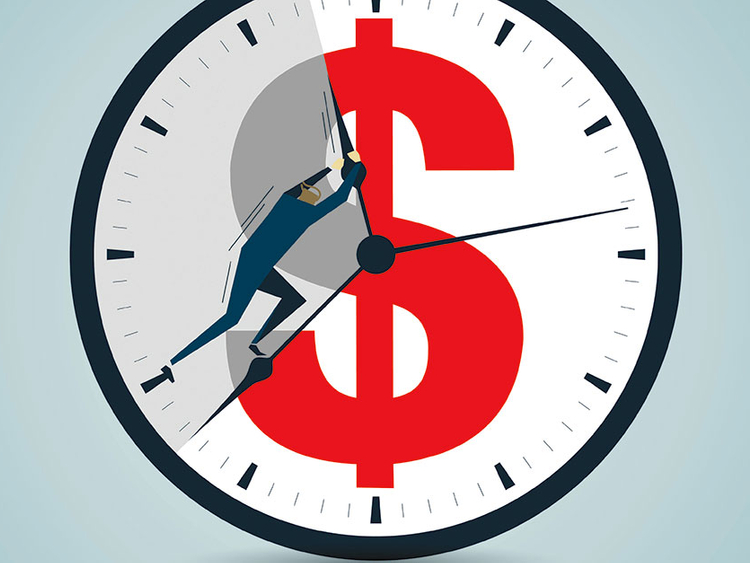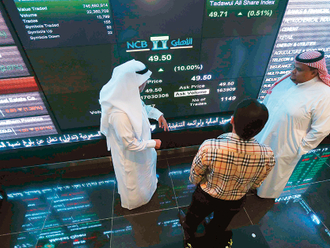Savers were encouraged last year when the Federal Reserve began raising rates. But interest paid on the lowest-risk federally insured accounts remains lacklustre.
Consumers willing to jump through some hoops, however, can get much better returns on their savings.
In its annual review of high-yield checking accounts, the financial website Bankrate found that the average yield at banks and credit unions was 1.65 per cent, while nearly a dozen yielded 2 per cent or more. By contrast, the average money market account yields just 0.11 per cent.
Bankrate’s analysis looked at a sample of 56 banks and credit unions in mid-to-late February.
But only about half of the high-yield accounts are available to consumers nationally, and all come with lots of strings attached. Most, for instance, require direct deposit and at least 10 debit transactions a month to earn the highest rate.
Other requirements may include agreeing to receive monthly statements electronically and paying bills online. And a few banks say they offer the accounts nationally but still require an in-person visit to a branch to open the account.
“This is not something that’s going to work for everybody,” said Greg McBride, Bankrate’s chief financial analyst.
For consumers who have direct deposit and use debit cards a lot, however, opening one of the accounts could be worthwhile since interest rates on savings accounts and certificates of deposit remain pedestrian.
“All the more reason to be proactive,” McBride said, “to make sure you’re getting the best return on your money.”
One example of a nationally available account is offered by Main Street Bank in Bingham Farms, Michigan. The account offers 2.25 per cent on balances up to $25,000 (Dh (the rate on balances over the cap is 0.25 per cent). In addition to a direct deposit or one automatic payment, the requirements include 12 debit transactions a month.
Ken Tumin, founder of DepositAccounts.com, a website that tracks deposit rates, said many of his readers are older people looking to maximise returns on low-risk accounts, and some have multiple high-yield checking accounts. (He calls them high-yield reward checking accounts because they typically offer a “reward” like reimbursement of ATM fees in addition to the higher rate.)
One reader, he said, has at least 10 of these accounts. While managing them and making sure all the various requirements are met is a challenge for consumers, he said, “They’re serious in terms of maximising their savings in a safe way.”
To get the most from the accounts, it’s best to think of them as a savings account, rather than a checking account, McBride said. The required debits should probably be for smaller amounts, he said, so the higher rate is applied to the largest balance possible. (A few banks require that the debit transactions hit a minimum purchase level, so be sure to check the details.)
Chequing accounts
Here are some questions and answers about high-yield chequing accounts:
Q: What if I don’t make the required number of debit transactions?
A: You won’t get the highest rate on your deposit for that month but will instead get a much lower, default interest rate. The average default rate is 0.06 per cent. The default rate isn’t permanent, however; you can regain it by meeting the required debits the next month. And, Tumin said, the high-yield accounts typically have no monthly fee, so while you won’t earn the higher rate if you fail to meet the account’s criteria, you won’t be penalised with an additional charge.
Q: Is there a limit on the balance that earns the higher rate?
A: Usually, yes — and that can limit the money you earn on your funds. Consumers must weigh the rate along with the balance cap to determine which account would generate the most interest for them, McBride said.
The caps range from a low of $500 to a high of $25,000, with an average of about $16,000, Bankrate found. Earning 2 per cent on the average would earn more than $300 for the account holder.
But of the 15 highest-yielding accounts, just one had a balance cap higher than $15,000.
Northpointe Bank in Grand Rapids, Michigan, for instance, offers a yield of 5 per cent, but it caps the balance eligible for the rate at $5,000. Funds over the limit earn just 0.1 per cent.
Tumin suggested that consumers with a relatively small amount of money to deposit choose the account with the highest rate, while those with a larger pot select an account with the highest cap.
Q: What if I already have my paycheck deposited into another account?
A: Some employers allow you to have your direct paycheck deposit split among multiple accounts, McBride said. So you could have a portion deposited into a main checking account, which you use to pay monthly bills, and have the rest deposited into the high-yield account to meet the criteria for the higher interest rate.
In addition, some accounts allow deposits that use an automated clearing house electronic network for clearing financial transactions — so-called ACH transactions — to meet the direct-deposit criteria, Tumin said. So you could set up a recurring automatic transfer from an online savings account — say, one offered by the Ally Bank or Capital One 360 — to meet that requirement.









